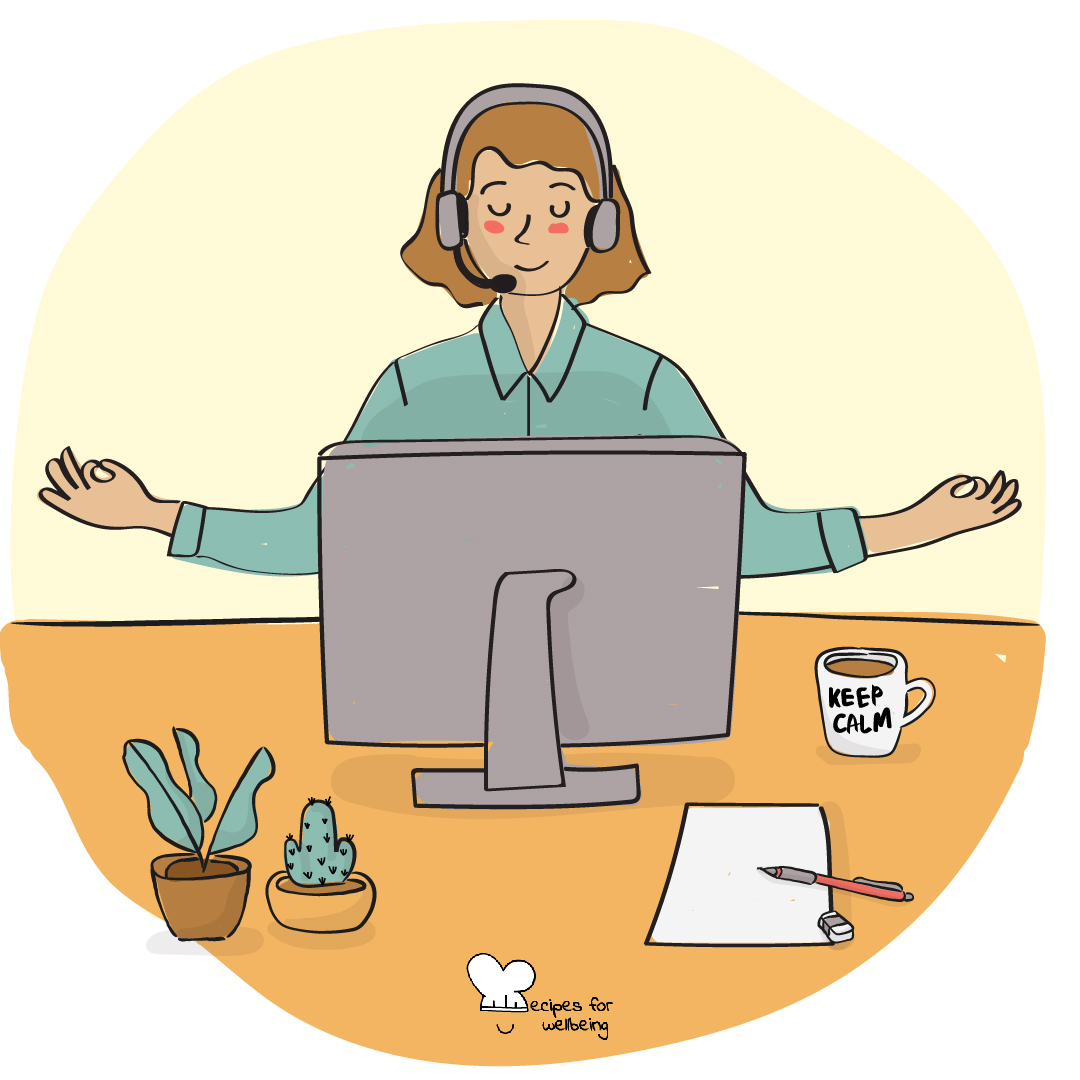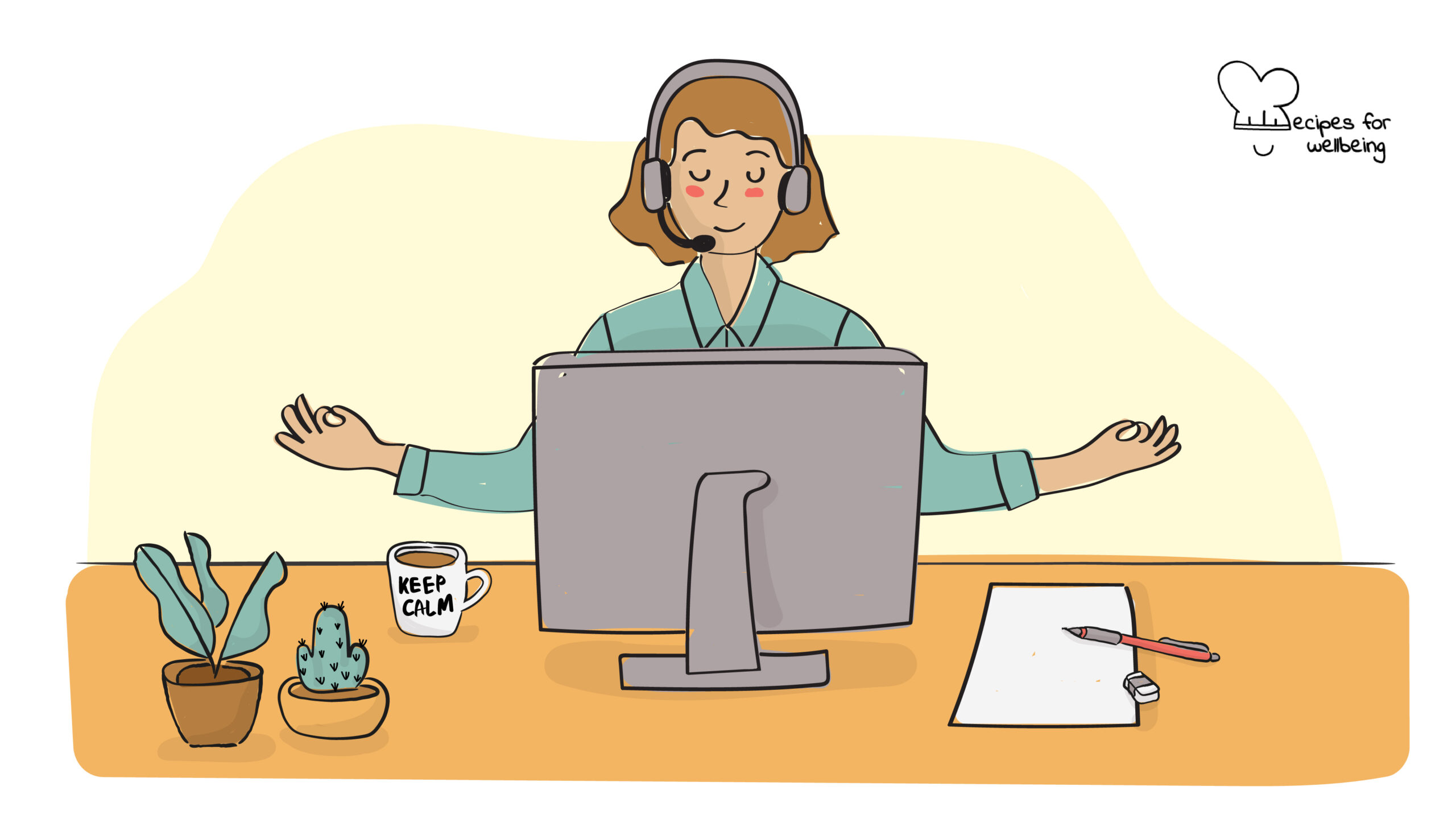
Mental health in the workplace
Mental health… is not a destination, but a process. It’s about how you drive, not where you’re going. ―Noam Shpancer
👥 Serves: Up to 100 people
🎚 Difficulty: Medium
⏳ Total time: Ongoing
🥣 Ingredients: –
💪 Nutritional values: Motivation, Performance, Positivity, Connection, Fulfillment

Mental health in the workplace
📝 Description
Tips to create a mentally healthy workplace.
This recipe is an easier adaptation of our recipe “Mental health for employers” and it has been kindly shared by Mental Health Europe.
A mentally healthy workplace promotes positive mental health and wellbeing, actively works to prevent harm to employees’ mental health and wellbeing and supports workers experiencing mental ill health.
Did you know?
- Work-related stress is the second most reported work-related health problem in Europe. Around half of European workers consider it to be common in their workplace.
- 79% of European managers are concerned about stress in their workplaces but less than 30% of workplaces in Europe have procedures for dealing with it.
- Mental health problems have become one of the leading causes for absenteeism from work and early retirement all over the European Region.
- Unrecognised mental ill health which does not result in sickness absence is much more costly than days lost through people taking time off work.
- Unaddressed mental ill health is responsible for a significant loss of potential labour supply, high rates of unemployment, sickness absence and reduced productivity at work.
- The causes of mental ill health may not only be associated with work but may be due to events or circumstances outside the workplace which can accumulate and cause distress.
- Mental health is strongly related to the socioeconomic circumstances of people’s lives. Poverty, unemployment, poor working conditions, substandard housing and poor education reduce wellbeing, as well as significantly increasing the risk of mental ill health.
Psychosocial risks arise from poor work design, organisation and management, as well as a poor social context of work, and they may result in negative psychological, physical and social outcomes such as work-related stress, burnout or depression. The main psychosocial risk factors reported by employees in Europe are high or unmanageable workload, unrealistic expectations, role ambiguity, organisational changes, low job satisfaction and personal accomplishment, lack of recognition, unsuitable work-life balance, poor interpersonal relations and support at work, and workplace violence, including harassment and bullying.
The good news is that psychosocial risks can be prevented and managed regardless of business size or type. There is good evidence that inexpensive mental health promotion programmes in the workplace are cost effective! This recipe shares tips on how to support a mentally healthy workplace.
Sources: EU–OSHA, OECD, World Health Organization, International Labour Organization, Department of Health, London, Centre for Mental Health. More information at: www.mhe.sme.org.
👣 Steps
Step 1 – Making a commitment
Make an organisational commitment to mental health at board level, encourage senior executives to speak up and champion positive mental health.
Step 2 – Creating a culture of openness
Create a culture of openness: mental health should not be a taboo subject at work, it should become a topic of conversation and a focus for shared activity (a walk, a shared lunch, a talk on how to look after your own mental health when under pressure, an informal meeting…).
Step 3 – Measuring mental health
Find ways of measuring the mental health and wellbeing of workforces and report to top level management and board level.
Step 4 – Training on mental health
Training on mental health for employers, front line managers and employees (identify, initiate conversation, support, respond appropriately, direct to professional counselling support). In particular, check out our recipe “Talking mental health in the workplace” for skills to develop to talk about mental health concerns in your team.
Step 5 – Making adjustments
Consider reasonable adjustments for employees experiencing severe or longer term mental health problems (which can often be managed by making small, sometimes temporary, adjustments to working schedules or other adaptations at work).
Step 6 – Things that matter
The manager’s attitude towards the employee is the single most important factor that has a substantial impact on workers’ mental health. Having a good manager can help employees to cope better with work-related stress or mental ill health.
- Reward is crucial: It may be linked to salary, but more broadly refers to the respect and esteem in which the person is held in the workplace.
- Fairness is key: Positive feelings of equity and fairness lead to increased satisfaction and motivation as well as commitment to work.
- Work-life balance is decisive: Tensions between home and work have consequences for a person’s mental health. Conflicting demands of work and home, a lack of support in the workplace for personal commitments, or a lack of support at home for work commitments can increase the risk of developing a mental health problem.
- Pay attention to interpersonal relationships: Inadequate, inconsiderate or unsupportive supervision, poor relationships with co-workers, bullying, harassment and isolation increase the risk of mental health problems. There is also some evidence of a relationship between supervisory style (e.g. authoritarian, laissez-faire) and employee satisfaction.
- Look at the workplace culture: The organisational culture of the workplace – communication, leadership and clarity of role and structure of the workplace – can greatly affect the mental health of employees.

